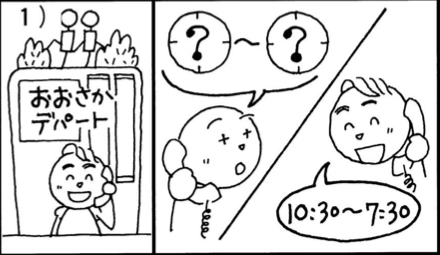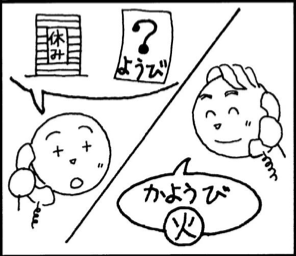Lesson 11 (Part III)
- Duration – counting number of minutes, hours, days, weeks, months and years
- Asking questions such as “how long” and “how many days”
- Frequency – number of times a week, constructing sentences with frequency
1. DURATION
Minutes

Hours

Days

Weeks

Months

Years

Added expressions to describe time:
10分だけ 休みます。 | I only rest for 10 minutes.
‘だけ | only’ is used after the time counter.
やすみは 日よう日だけ です。| Sunday is my only rest day.
Asking “how long”:
To ask “how long”, we use the phrase ‘どのくらい | donokurai’.
どのくらい日本ごを べんきょうしましたか。| How long have you studied Japanese?
– – – – – – 半年ぐらい べんきょうしました。| About half a year.
休みに どのくらい りょこうをしましたか。| How long was your trip during the holidays?
– – – – – – 一週かんぐらい りょこうを しました。| My trip was about 1 week.
Sentence structure: Time expression + object + *particle o + verb
Asking “how long does it take”:
うちから えきまで どのくらい かかりますか。 | How long does it take to get to the station from home?
– – – – – – バス で 15分 ぐらい かかります。 | It takes about15 mins by bus.
– – – – – – あるいて 5分です。 | 5 mins by walking.
東京から 大阪まで 新幹線で どのくらい かかりますか。 | How long does it take to get to Osaka from Tokyo by Shinkansen?
– – – – – – 3時間 かかります。| It takes 3 hours.
うちから 大学まで どのくらい かかりますか。 | How long does it take to get to school from home?
– – – – – – でんしゃで 2 時間 かかります。| It takes 2 hours by train.
うちから MRTのえきまで どのくらい かかりますか。| How long does it take to get to the MRT station from home?
– – – – – – バスで 1 0 分 ぐらい かかります。| It takes 10 minutes by bus.
2. FREQUENCY
To count how many times a week that something happens, we use ‘かい | kai’, which is “times”.
1週間に 何かい 日本語を べんきょうしますか。 | In one week how many times do you study Japanese Language?
– – – – – – 1週間 に 2 かい 日本語を べんきょうします。 | In one week I study Japanese Language twice.
Sentence structure: time expression + *particle ni + frequency + noun + *particle o + verb
1 か月に 何かい えいがを 見ますか。| How many times do you watch movies in a month?
– – – – – – 3 かい 見ます。| I watch 3 times.
1 年に 何かい りょこうを しますか。| How many times do you go on a trip every year?
– – – – – – 1 かい りょこうを します。| I go on a trip once.





 From this illustration, we can make two kinds of statements. One uses the particle ‘kara’ and ‘made’; this is a continuous statement. The other uses the particle ‘ni’; this is a momentary statement, used at the particular point in time.
From this illustration, we can make two kinds of statements. One uses the particle ‘kara’ and ‘made’; this is a continuous statement. The other uses the particle ‘ni’; this is a momentary statement, used at the particular point in time.